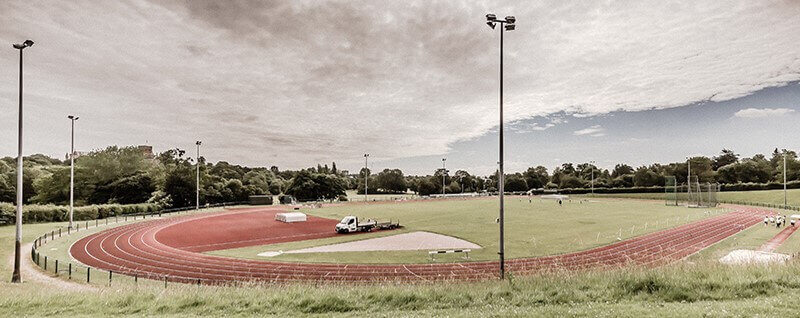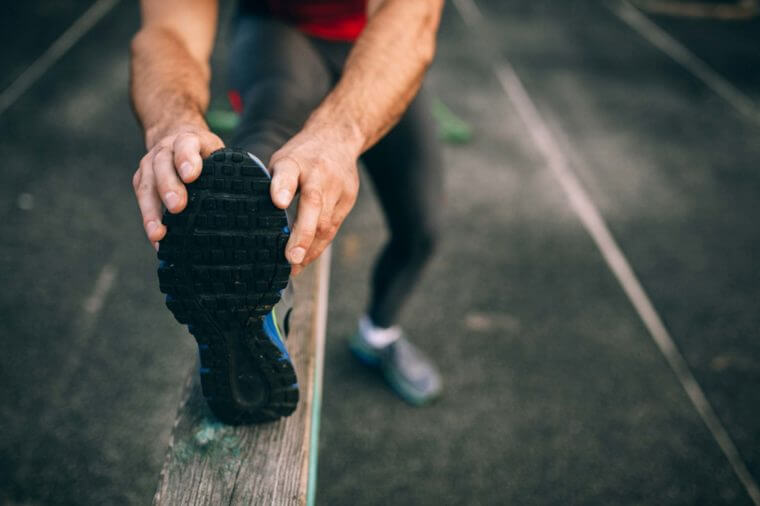We have taken a look before about detraining from time off such as end of seasons break and we have briefly looked at how long does it take for training to take effect or see the benefit of a session, here we will delve a little deeper.
If we run long miles, we build incredible endurance. If we resistance train in high volumes, we experience muscle hypertrophy. When we provide a training stressor, we adapt and experience a training effect. But how come we don’t experience muscle hypertrophy right after a training session? How come it takes weeks of training in the 1-5 rep range to get strong?
Training effects can be categorized into:
- Immediate and Acute effects (the immediate effects of training are: muscle fatigue, energy depletion, increased blood flow to working muscles, immediate changes on blood pressure and heart rate, etc)
- Chronic and Cumulative effects (increased endurance, muscle hypertrophy, increased strength and power, etc over the long term)
- Residual effects (to what extent training adaptations deteriorate after bouts of detraining or deloading)
For the purpose of this article, we’ll be discussing cumulative and residual effects as it pertains to periodisation and programming.
The cumulative training effect refers to the changes in “physiological capabilities and level of physical/technical abilities resulting from a long-lasting athletic preparation” (source). Vladimir Issurin, an expert and innovator of Block Periodisation, notes that there are functional limits to our body’s physiological systems, some of which are more trainable than others. Changes in aerobic characteristics from endurance training such as mitochondrial biogenesis and muscle capillarisation are more pronounced compared to anaerobic characteristics such as hydrogen ion buffering.
SAID
One of the most basic tenets of strength and conditioning is a principle known as the SAID principle; Specific Adaptation to Imposed Demands. In the simplest possible terms, you get better at what you’re doing, not at what you aren’t doing. Running will make you a better runner, but not a better swimmer, and lifting light weights will not help you lift heavy ones. Even more specifically, running a long distance slowly won’t make you faster, and lifting a light weight repeatedly won’t make you stronger.
Since its introduction–and probably even beforehand–every training plan worth the paper it’s written on has taken this into account. The result is that strength athletes work with heavy weights, endurance athletes are exposed to long-duration efforts, and power athletes try to make things move fast. Athletes needing a blend of qualities are given a blend of stressors (enter the role of periodisation). Training and therefore stress is specific
In contrast, residual training effects refer to how long these adaptations are maintained after an acute withdrawal of training volume load or absolute cessation of training. The table below shows the residual training effects of different physical adaptations:

The degree of detraining is dependent on several factors.
First, the duration of training before cessation. Residual training effects usually follow an analogy made by Vladmimir Zatsiorsky (author of The Science and Practice Of Strength Training) and Dr. William Kraeme: “soon ripe, soon rotten”. This suggest that physical attributes that have been developed for a longer time, can be maintained for longer before there is a decrease in performance following a deload or periods of no training. In a similar view, Nick Winkleman and Issurin note that adaptations that result from a structural change, such as cardiac remodelling, muscle capillisaration and muscle hypertrophy last longer after detraining, compared to adaptations that occur on the enzymatic level such as anaerobic performance, hydrogen ion buffering and phosphocreatine storage. A great example of this in the strength training realm and one that many of you can relate to is the fact that many lifters and trainees are able to maintain their muscle mass even with prolonged periods of low volume, high-intensity training. Muscle mass loss is a fear many bodybuilders and fitness enthusiasts have. But if you’ve spent some quality time building that muscle and protein intake during periods of deload are high, chances are, it won’t waste away as quickly or as easy as you think.
Secondly, the training age and experience of an athlete/trainee also plays a factor in training residuals. Older and more advanced level athletes tend to experience longer residuals because of their higher accumulated training time, in line with the “soon ripe, soon rotten” analogy.
Lastly, the intensity used during retraining or detraining loads plays a role in mediating training residuals as well. The use of moderate to high-intensity training slows down the rate of detraining, however, volume must be controlled in order to avoid disrupting the recovery process. Residual training effects are of extreme importance especially when using non-traditional periodisation methods like block periodisation or when managing the training loads for sports team athletes during the in-season or competition-period. Residual training effects also give way to the method of tapering, where volume is decreased to reduce fatigue and allow for the expression of fitness (Fitness-Fatigue Model).
An extreme example of this is a study carried out by Pritchard et al. 2017, where resistance trained males completed two 4-week training programs followed by either 3.5 or 5.5 days of training cessation. Following this deload (in the form of no training, NOT lowered volume), peak force in the bench press and mid-thigh pull increased above baseline.

Infographic Designed by @YLMSportScience
I will cover the concept of tapering and include some practical methods/recommendations in future articles.
Since not all physical abilities can be developed concurrently in a periodised program to the same degree, knowledge on the cumulative and residual effects enables coaches to prioritize certain performance measures, allowing them to make better strategic choices when planning a training program.
Phases of Training
One of the most agreed upon definitions of periodisation is the division of training phases and periods within a training macrocycle. However, the names of these phases vary depending on the sport, characteristics of the periodisation model, and the philosophy of the coach.
Mesocycles/phases commonly follow the names: preparatory phase, competition phase and transitional/active-rest phase. The preparatory phase can further be divided into general preparatory phase (GPP) and specific/specialized preparatory phase (SPP).
PREPARATORY PHASE/OFF-SEASON

In GPP, the training variables are more general and varied in nature, stimulating a wide variety of physical attributes while during the SPP, variables and movements are more sport-specific, aiming to further prepare the athlete for competition.
GPP and SPP can be further broken down into extensive and intensive phases, describing the average intensities of that particular phase. An extensive phase will primarily consist of low-intensity, high volume training, using 50-70% of 1RM during resistance training (muscle endurance and hypertrophy) and working in Zones 2-3 in endurance training (aerobic). While an intensive phase will include a larger amount of medium to high-intensity training using training loads above 75-80% of 1RM and high intensity interval training for conditioning.
The preparatory phase is often called the off-season in seasonal, team-based sports like hockey, soccer/futbol, rugby, etc. This off-season or preparatory phase is where the most aggressive and creative periodisation strategies occur to induce the most improvements in performance variables before a competition date or competitive season. Any weaknesses identified from previous training cycles or competitive matches is best addressed here, and any strengths should be further improved.
TRANSITIONAL-1 PHASE/PRE-COMPETITION/PRE-SEASON

After a preparatory training phase and prior to a competition date or competitive season, the volume load of training starts to decrease. This decrease is meant to achieve 2 things:
- Reduce training fatigue so physical and mental attributes are peaked for the upcoming competition/season
- Make time and room to accommodate the upcoming competition schedule, travelling schedule, media obligations and hone in technical sport-specific skills
This phase is called the transitional-1 stage, or the pre-competition phase or pre-season phase. Because of the length of many sports’ in-season (lasting anywhere from 4-7 months depending on playoff eligibility), team-based sports should avoid any aggressive tapering methods heading into the competition season, and a more strategically planned maintenance program should be prescribed. This differs from climatic sports like many sports in the Olympics or combat sports like MMA and boxing where the athletes are preparing for a one-day/one-night competition. In those cases, aggressive tapers are necessary as there is less of need to maintain physical attributes post-competition.
COMPETITION PHASE/IN-SEASON

The competition phase, also known as in-season for team-based sports, is dedicated to maintaining specific performance variables such as strength and anaerobic conditioning in order to attenuate any detraining effects an athlete or team may experience. Knowledge of residual effects really plays a big role here. A coach needs to know how many hypertrophy-based, strength-based, power-based and conditioning-based training sessions are needed in order to maintain an acceptable level of fitness when their athletes are busy competing in matches, games and tournaments. A coach must also take into account what physical attributes are already being trained just by competing and playing in games. This may differ from position to position depending on the sport. A goalie in soccer will not utilize the same energy systems as a forward, a post will not have the same energy expenditure as a point guard in basketball. The most time and energy-efficient method of maintaining physical attributes must be performed when athletes have a full competition schedule.
TRANSITIONAL-2 PHASE/ACTIVE REST PERIOD

The transitional-2 or active-rest phase of a yearly training plan is dedicated to complete restoration of the team and athletes, both from a physical and mental standpoint. It is common for athletes to engage in physical activity or exercises that do not relate to their respective sports. However, exercises should be low-impact in nature and should not impede or jeopardize the recovery process if high performance is the goal. The main goal of the transitional-2, active-rest period is to withdraw physical and mental stress and pressure that accumulated from hard training and competition, in order to avoid over-training and mental burnout.
Rinse & Repeat
When the athletes have undergone adequate rest, they are now ready to re-enter the preparatory training cycle or off-season. These phases or seasonal compartmentalization of training occur on the macrocyclic level, with each phase lasting several months (depending on the sport, of course). There are a few exceptions, like in combat sports, where competition dates differ year to year, usually controlled by fighter rankings, and business-driven promoter decisions. In these sports, rigid periodisation models often fail in properly preparing the athletes for competition; therefore a more flexible approach to periodisation and training programming must be used. In the next article of this series, we’ll dive into specific periodisation models and their defining characteristics.



